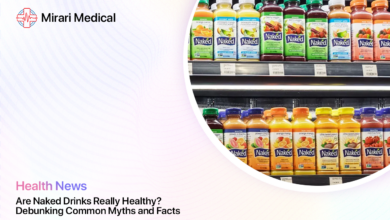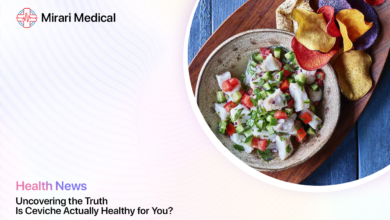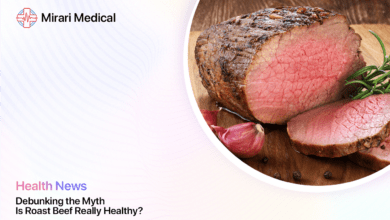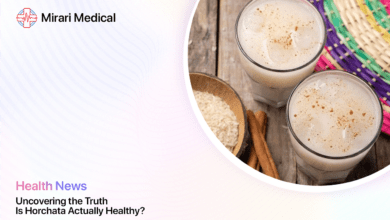Are Rotisserie Chickens a Healthy Meal Option?
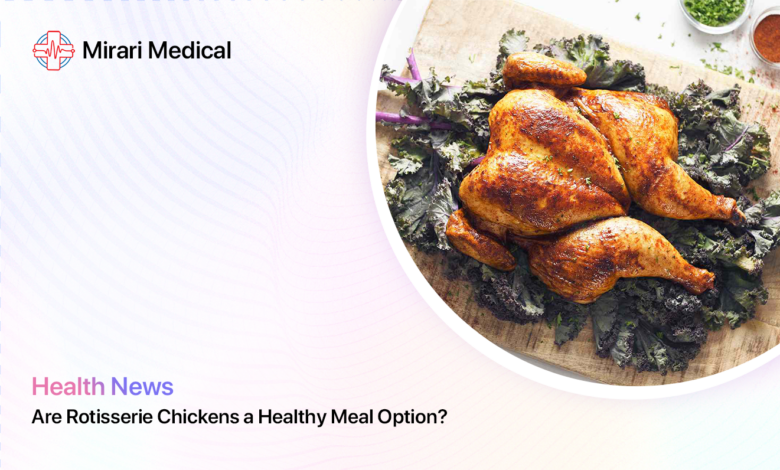
You may be interested
Rotisserie chickens have become an increasingly popular meal choice for many people due to their convenience, affordability, and delicious taste. You can find these savory, ready-to-eat chickens at most grocery stores, making them an easy option to pick up for a quick family dinner. But are rotisserie chickens actually healthy? Let’s take a closer look at the nutritional facts and potential benefits and risks of eating rotisserie chicken.
What Are Rotisserie Chickens?
Rotisserie chickens are whole chickens that are skewered on a spit and rotated over a heat source, typically an open flame or electric heating element. As the chicken rotates, it bastes in its own juices, resulting in moist, flavorful meat with a crispy skin. Most grocery stores and some restaurants sell pre-cooked rotisserie chickens that are ready to eat as soon as you purchase them.
The appeal of rotisserie chicken lies in its versatility and convenience. You can enjoy it on its own as the main course of a meal, or use the meat in a variety of recipes like soups, salads, sandwiches, tacos, and casseroles. For busy families, a store-bought rotisserie chicken provides an affordable and tasty protein that requires no preparation or cooking time at home.
How Are Rotisserie Chickens Prepared?
The process of preparing a rotisserie chicken begins with selecting a whole, raw chicken. The chicken is then typically seasoned inside and out with a blend of herbs and spices like salt, pepper, garlic powder, and paprika. Some stores may also inject the chicken with a saline solution to enhance moisture and flavor.
Next, the chicken is skewered lengthwise on a long metal rod called a spit. The spit is fitted into the rotisserie machine so the chicken is suspended over the heat source. As the spit rotates, it slowly turns the chicken, allowing it to cook evenly on all sides.
Cooking times for rotisserie chickens vary based on their size and the temperature of the heat source, but it typically takes about 1 1/2 to 2 hours for the chicken to fully cook. The internal temperature of the thickest part of the thigh should reach at least 165°F (74°C) to ensure the chicken is safe to eat.
Once the chicken is cooked through, it is removed from the heat and allowed to rest for a few minutes before being packaged for sale. Most stores keep their rotisserie chickens warm under a heat lamp until they are purchased.
What Are the Nutritional Facts of Rotisserie Chickens?
What Nutrients Do Rotisserie Chickens Provide?
Chicken is an excellent source of lean protein, and rotisserie chickens are no exception. A 3-ounce (85-gram) serving of rotisserie chicken provides:
- Protein: 23 grams
- Fat: 11 grams
- Saturated fat: 3 grams
- Carbohydrates: 0 grams
- Fiber: 0 grams
- Sodium: 452 milligrams
In addition to protein, rotisserie chicken is a good source of several important vitamins and minerals, including:
- Niacin: 51% of the Daily Value (DV)
- Selenium: 36% of the DV
- Phosphorus: 17% of the DV
- Zinc: 11% of the DV
- Vitamin B6: 16% of the DV
Rotisserie chicken also contains smaller amounts of iron, magnesium, potassium, and several B vitamins.
It’s important to note that the nutrient content can vary somewhat depending on the cut of chicken. For example, dark meat like thighs and drumsticks tends to be higher in fat and calories compared to white meat like breast. Eating the skin also adds more fat and calories.
What Are the Calories and Fat Content in Rotisserie Chickens?
A 3-ounce (85-gram) serving of rotisserie chicken breast with skin contains:
- Calories: 170
- Protein: 23 grams
- Fat: 9 grams
- Saturated fat: 2.5 grams
In comparison, a 3-ounce serving of rotisserie chicken thigh with skin contains:
- Calories: 230
- Protein: 21 grams
- Fat: 15 grams
- Saturated fat: 4 grams
As you can see, the thigh meat is higher in calories and fat, especially saturated fat, compared to the breast meat. Removing the skin significantly reduces the fat content. For example, a skinless rotisserie chicken breast has just 5 grams of total fat and 1 gram of saturated fat per 3-ounce serving.
Are Rotisserie Chickens a Healthy Meal Option?
What Are the Benefits of Eating Rotisserie Chickens?
Rotisserie chickens can absolutely be part of a healthy diet. Here are some of the potential benefits:
- Excellent source of protein: Chicken is one of the best sources of lean, low-fat protein. Getting enough protein is important for maintaining and building muscle mass, keeping you feeling full and satisfied after meals, and supporting healthy skin, hair, and nails.
- Convenient and time-saving: One of the biggest advantages of rotisserie chickens is their convenience. They provide an easy, ready-to-eat source of protein that you can enjoy on its own or incorporate into a variety of meals. For busy families, rotisserie chickens save valuable time on cooking.
- Affordable: Rotisserie chickens are very affordable compared to many other protein options. You can often find whole rotisserie chickens for $5-7, which is enough to feed a family of four. Buying a rotisserie chicken can be more cost-effective than buying raw chicken breasts and cooking them at home.
- Versatile: Rotisserie chicken is incredibly versatile and can be used in a wide range of recipes. You can slice the breast meat for sandwiches and wraps, shred the thigh and leg meat for tacos and burritos, dice up the meat for soups and salads, or mix it into pasta and grain dishes. Leftover rotisserie chicken is also great for meal prepping lunches for the week.
- Can be part of a nutritious meal: When paired with healthy side dishes like fresh or roasted veggies and whole grains, a rotisserie chicken can form the basis of a well-rounded, nutritious meal. Aim to fill half your plate with non-starchy vegetables, a quarter of your plate with chicken, and the remaining quarter with complex carbohydrates like brown rice or quinoa.
What Are the Potential Health Risks of Eating Rotisserie Chickens?
While rotisserie chickens can be a healthy choice overall, there are a few potential drawbacks to be aware of:
- High in sodium: Many store-bought rotisserie chickens are high in sodium due to the saline solutions they are injected with and the seasonings rubbed on the skin. A 3-ounce serving of rotisserie chicken can contain over 450 milligrams of sodium. Consuming too much sodium can contribute to high blood pressure in some people.
- May contain added sugars: Some rotisserie chicken seasonings contain added sugars, which can add empty calories. However, the amount of added sugar is usually quite small.
- Saturated fat content: While chicken is generally a lean protein, rotisserie chickens can be higher in saturated fat than plain grilled or roasted chicken, especially if you eat the skin. Saturated fat can raise LDL (“bad”) cholesterol levels, which is a risk factor for heart disease. The American Heart Association recommends limiting saturated fat to no more than 5-6% of daily calories.
- Risk of foodborne illness: As with any poultry product, there is a risk of foodborne illness if rotisserie chickens are not stored and handled properly. Make sure to keep your rotisserie chicken refrigerated and consume it within 3-4 days. Reheat leftovers to an internal temperature of 165°F before eating.
How Can You Make Rotisserie Chickens Healthier?
With a few simple strategies, you can make rotisserie chickens an even healthier choice:
What Are Some Healthy Side Dishes to Pair with Rotisserie Chickens?
- Salad: Serve your rotisserie chicken alongside a big green salad with plenty of colorful veggies like tomatoes, cucumbers, carrots, and bell peppers. Use a light, olive oil-based dressing.
- Roasted vegetables: Toss broccoli, cauliflower, Brussels sprouts, bell peppers, onions, or any other veggies with a little olive oil, salt, and pepper. Spread on a baking sheet and roast at 425°F until tender and caramelized, about 20-30 minutes.
- Sweet potatoes: Slice sweet potatoes into wedges, toss with olive oil and spices like paprika and garlic powder, and roast until crispy.
- Quinoa or brown rice: Cook up a batch of quinoa or brown rice to serve alongside your chicken for a fiber-rich whole grain option. You can also mix in sautéed veggies and herbs.
- Sautéed greens: Sauté spinach, kale, or Swiss chard with a little olive oil and garlic for a quick, nutrient-packed side dish.
How Can You Reduce the Sodium and Fat Content in Rotisserie Chickens?
- Remove the skin: Taking the skin off your rotisserie chicken is one of the easiest ways to reduce its fat and calorie content. This simple step can eliminate about half the total fat and a third of the saturated fat.
- Opt for breast meat: Rotisserie chicken breast meat is lower in fat and calories compared to the thigh and leg meat. A 3-ounce serving of skinless breast meat contains just 5 grams of total fat.
- Look for lower-sodium options: Some stores offer “naked” or unseasoned rotisserie chickens that are not injected with saline solutions, which can significantly reduce the sodium content. You can also compare nutrition labels between different brands and choose the one with the least amount of sodium per serving.
- Drain the juices: The juices that collect at the bottom of the rotisserie chicken container are very high in fat and sodium. Drain these off before serving the chicken.
- Use herbs for flavor: Instead of relying on the salty seasonings, try sprinkling your rotisserie chicken with dried or fresh herbs like rosemary, thyme, oregano, or tarragon for added flavor without the extra sodium.
What Are Some Alternative Protein Options to Rotisserie Chickens?
If you’re looking to mix up your protein options, here are some nutritious alternatives to rotisserie chicken:
- Grilled or baked fish: Fish like salmon, cod, tilapia, and tuna are excellent sources of lean protein and heart-healthy omega-3 fatty acids. Grill, bake, or pan-sear fish fillets and serve with veggies and whole grains.
- Tofu: For a plant-based protein option, try firm tofu. It’s rich in protein, low in fat, and incredibly versatile. Cube and sauté it, crumble and scramble it, or blend it into smoothies and sauces.
- Lentils: Lentils are packed with fiber, protein, and an array of vitamins and minerals. Use them in soups, stews, salads, or veggie burgers.
- Greek yogurt: Non-fat or low-fat Greek yogurt is an excellent source of protein, calcium, and probiotics. Use it as a base for dips and dressings, mix it into smoothies, or enjoy it topped with fruit and nuts.
- Eggs: Eggs are a budget-friendly, nutrient-dense protein option. Hard-boil them for snacks and salads, scramble them with veggies for a quick meal, or use them to make frittatas and omelets.
What Are the Nutritional Values of These Alternative Protein Options?
Here’s a breakdown of the protein, fat, and calorie content for a 3-ounce (85-gram) serving of these alternative protein options:
| Protein Source | Calories | Protein | Fat |
|---|---|---|---|
| Salmon, baked | 155 | 22 g | 7 g |
| Firm tofu | 80 | 9 g | 4 g |
| Lentils, cooked | 115 | 9 g | 0 g |
| Greek yogurt, non-fat | 80 | 15 g | 0 g |
| Egg, large | 75 | 6 g | 5 g |
As you can see, all of these options are relatively low in calories and fat while providing a good amount of protein. Salmon is higher in fat compared to the others, but it’s mostly heart-healthy unsaturated fats.
How Do They Compare to Rotisserie Chickens in Terms of Health Benefits?
In general, these alternative protein options stack up well against rotisserie chicken in terms of their health benefits. Here’s a quick comparison:
- Salmon is an excellent source of omega-3 fatty acids, which have anti-inflammatory properties and may help reduce the risk of heart disease and cognitive decline. It’s also a good source of vitamin D.
- Tofu is a good source of calcium, iron, and other important minerals. It also contains beneficial plant compounds called isoflavones that may have cancer-fighting properties.
- Lentils are one of the best plant-based sources of protein and fiber. They’re also rich in folate, iron, and potassium. The high fiber content of lentils may help reduce the risk of heart disease, diabetes, and certain cancers.
- Greek yogurt is an excellent source of calcium, which is important for bone health. The probiotics in yogurt may also support digestive health and boost immunity. Opt for non-fat or low-fat varieties to keep calories and saturated fat in check.
- Eggs are often referred to as “nature’s multivitamin” because they contain a little bit of almost every nutrient we need. They’re especially rich in choline, a nutrient important for brain health, and lutein and zeaxanthin, antioxidants that support eye health.
The main advantage of rotisserie chicken is its convenience and versatility. But as long as you’re choosing lean preparations and pairing them with nutrient-dense sides, any of these protein options can be part of a healthy diet.
FAQs
Is rotisserie chicken a healthy food?
Rotisserie chicken can absolutely be a healthy food choice, especially if you opt for skinless breast meat and pair it with nutritious side dishes like veggies and whole grains. It’s a great source of lean protein and provides several important vitamins and minerals. However, it can be high in sodium, so look for lower-sodium options or drain off the juices to reduce your intake.
Why is rotisserie chicken so high in calories?
Rotisserie chicken itself is not necessarily high in calories, but certain parts of the chicken are higher in fat and calories than others. The skin, in particular, is very high in fat and calories. Dark meat like thighs and drumsticks also tends to be higher in calories compared to white breast meat. A 3-ounce serving of skinless rotisserie chicken breast contains just 140 calories.
Is rotisserie chicken good to eat for weight loss?
Rotisserie chicken can be a great option for weight loss, as long as you choose skinless breast meat and practice portion control. Chicken breast is very high in protein and low in calories, which can help keep you feeling full and satisfied. Pair your chicken with fiber-rich veggies and whole grains for a balanced meal.
Is Costco rotisserie chicken not healthy?
Costco rotisserie chicken, like most store-bought rotisserie chickens, is high in sodium. A 3-ounce serving contains about 460 milligrams of sodium, which is about 20% of the recommended daily limit. However, Costco chickens are generally quite large, so you may be getting more sodium if your portions are bigger. Costco rotisserie chicken can still be part of a healthy diet, but it’s best to remove the skin, watch your portion sizes, and balance it out with lower-sodium sides.
What are the negatives of rotisserie chicken?
The main potential negatives of rotisserie chicken are its high sodium content and the saturated fat in the skin. Store-bought rotisserie chickens are often injected with saline solutions and rubbed with salty seasonings, which can significantly increase their sodium content. Consuming too much sodium can contribute to high blood pressure in some people. Additionally, the skin of rotisserie chicken is high in saturated fat, which can raise LDL (“bad”) cholesterol levels and may increase the risk of heart disease if consumed in excess. However, these negatives can be mitigated by removing the skin, draining off the juices, and watching your portion sizes.
Is rotisserie chicken a junk food?
Rotisserie chicken itself is not a junk food. It’s a good source of lean protein and provides several important vitamins and minerals. However, it can be considered unhealthy if you eat too much of the skin or consume very large portions. As with any food, the key is moderation and balance. Pair your rotisserie chicken with plenty of vegetables and whole grains, and limit your intake of the skin and juices to keep sodium and saturated fat in check.
Takeaways
- Rotisserie chicken is a convenient, affordable, and versatile source of lean protein. It can absolutely be part of a healthy diet when consumed in moderation.
- A 3-ounce serving of skinless rotisserie chicken breast provides 23 grams of protein and just 140 calories and 5 grams of fat.
- The main potential downsides of rotisserie chicken are its high sodium content and the saturated fat in the skin. Look for lower-sodium options, remove the skin, and drain off the juices to mitigate these negatives.
- Pair your rotisserie chicken with nutrient-dense side dishes like salads, roasted veggies, quinoa, or brown rice for a well-rounded meal.
- If you’re looking to mix up your protein options, consider alternatives like grilled fish, tofu, lentils, Greek yogurt, or eggs. These options provide unique health benefits and can add variety to your diet.
Ultimately, whether rotisserie chicken is a healthy choice for you depends on your individual dietary needs and preferences. If you enjoy it and it helps you meet your nutrition goals, it can definitely be part of a balanced eating pattern. As with any food, the key is moderation and making smart choices most of the time.
Your trusted source for health info, offering expert advice, news, and tips to stay healthy and informed.

